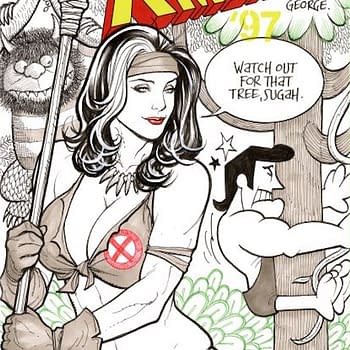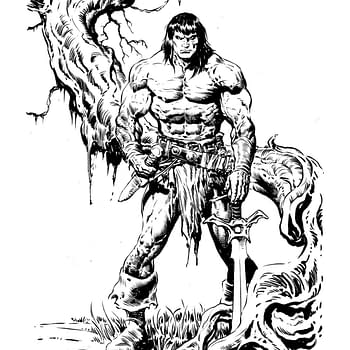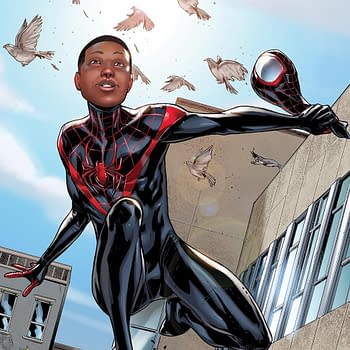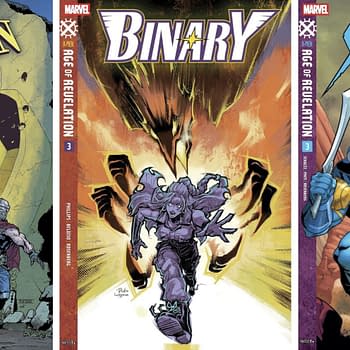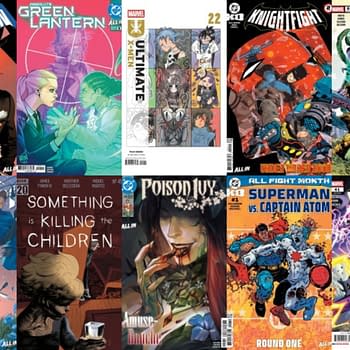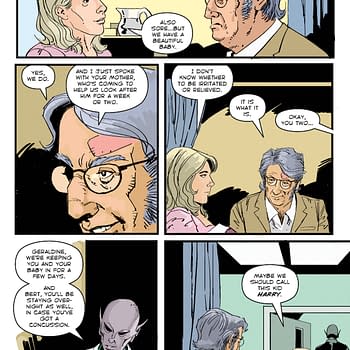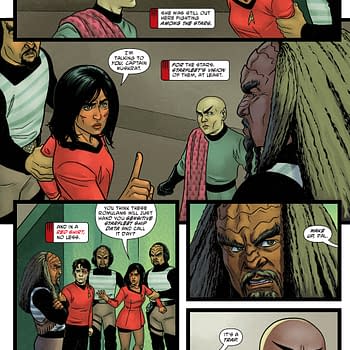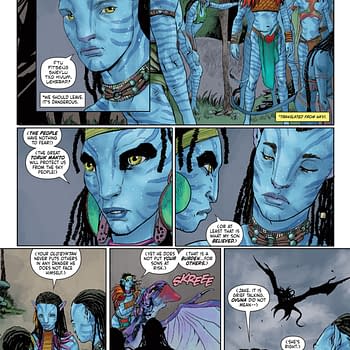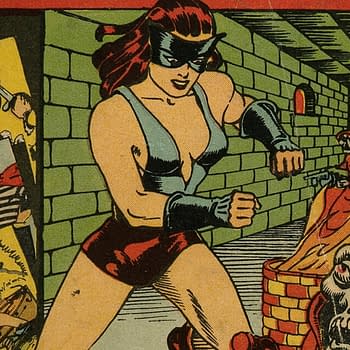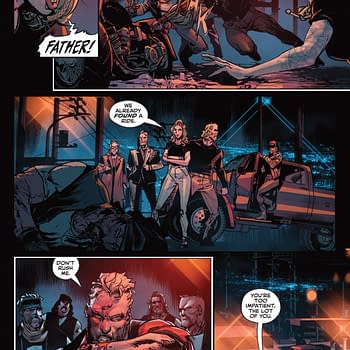Posted in: Comics, Crisis, DC Comics | Tagged:
Revealing DC Comics' Next Crisis Event…
The DC Universe started properly in 1940 with All-Star Comics #3, the first appearance of the Justice Society, characters from different comics, joining together to create one superhero team, and introducing a few new names in the process. Characters featured were even owned by different publishing companies at the time, though they would later merge. But it took until 1952 for Batman and Superman to meet, in Superman #76.
And until 1956 and Showcase #4, the first appearance of Barry Allen as the Flash that would retcon the original Flash stories as fictional comics within the DC Universe.
This would then be further dealt with in 1961 with Flash #123, the famous Flash Of Two Worlds storyline that created the multiverse, having the original Flash and the JSA being residents of a parallel world. Justice League and the JSA had an annual Crisis crossover. And from that point on, many alternate worlds were shown, often for a different publisher's line that had been bought out by DC Comics.
Marvel Comics kept to their own continuity, though Mark Grunwald was principal in establishing a multiverse – and the rules of such, especially when time travel was involved, while Dave Thorpe parodied the complexity, gave the Marvel Universe its own place in the DC Multiverse as Earth 616, picked up by Alan Moore and then Chris Claremont.
In 1986, it had gotten too much, with variant versions of different dimensions competing for canonicity. DC Comics rebooted its continuity with the Crisis On Infinite Earths mini-series by Marv Wolfman and George Perez, which tore apart the DC Multiverse, saw John Byrne reboot Superman and generally attempt to rewrite what was seen as a convoluted mess of a shared universe.
They hadn't seen anything yet.
Because some aspects of continuity had escaped and some creators couldn't help but pull on the threads, Superboy and Supergirl's effect on the Legion Of Superheroes, and the clones of their earlier selves, the pocket universe, competing versions of Hawkman and Donna Troy, still causing continuity headaches.
A proposed Alan Moore series, Twilight Of The Superheroes, a crossover event that would have found an excuse for anything that didn't fit continuity, the Fluke, without being overly complex was junked when Alan Moore quit DC Comics over the Watchmen and V For Vendetta rights.
1994's Zero Hour: A Crisis In Time was an attempt to deal with all that, a reshuffle of continuity that managed to ignore Hawkman.
Grant Morrison postulated it and Mark Waid tried to make the Fluke real with Hypertime introduced in Kingdom Come in 1991, that saw every story happening somewhere. It was systematically ignored and rejected, especially when Waid fell out badly with DC but Morrison would retain elements later. Though Waid did manage to reshuffle Superman's origin again in 2003 with Birthright, and then another go at sorting out the Legion's history , which fought against other creator's versions and eventually would take Final Crisis in 2007 to sort out.
Yes, Final Crisis, no one believed that title then either. But before then you had Geoff Johns' Infinite Crisis in 2006 which had Superboy Prime punching out continuity to try and fix everything, and the series 52 which gave us a 52 Earth-Multiverse. Oh and another Superman origin to follow.
Final Crisis was Grant Morrison's attempt to interject his Hypertime ideas back into DC Continuity, in an attempt to make the fictional DC Universe sentient. It didn't seem to work.
And then in 2011, the big one, Flashpoint which tore everything apart again and the New 52 which saw Dan DiDio take the lead, and DC publish 52 monthly titles and reboot their continuity one more time, aside from Green Lantern because Geoff Johns didn't want to play, and Grant Morrison's Batman Inc which somehow managed a half life of pre-52 and New 52 simultaneously. Everyone's story went back to being five years into their superhero lives (aside from Batman who had ten years 'cos he had a kid) and everyone's marriage was removed alongside Superman's red trunks, aside from Animal Man, and Geoff Johns played shy with Aquaman and Mera, never using defining words.
Then in 2016, Geoff Johns got his turn again with DC Rebirth and, frankly, it worked. Superman was married again and now had a kid and it worked. Batman soared. Flash and Wonder Woman were actually doing as well, if not better, than Green Lantern. Even Red Hood And The Outlaws managed to sell. And Geoff Johns got to bring Watchmen into the DC Universe, as Dr Manhattan was now blamed for the New 52, taking away the lived lives of heroes. As things started to get reset for the Flash, the Titans and more, we got Doomsday Clock, showing the near future of the DC Universe, but putting Captain Marvel, the Legion and the JSA on hold while he and Gary Frank got on with it.
And Scott Snyder and Greg Capullo managed to persuade DC Comics not to call their series Dark Crisis, but Metal. And gave us the dark multiverse underneath the 52 universes, a host of Elseworlds attacked and Sandman got dragged in as the series referenced all the Crisis in a melting pot of gorgeousness and opened up the DC Multiverse to everything else, the goldfish bowl dropped in the ocean as the Source Wall was split asunder. And Brian Bendis brought Superman's red trunks back.
And right now a lot of people are having fun with it all. The Source Wall has broken and all sorts of things are flooding in to the multiverse.
Which means… it's reboot time. Again.
Bleeding Cool has been told by high-level industry sources about the next big DC Comics crossover event. And its name?
CRISIS.
Not a Crisis of anything. Not an Anything Crisis. Simply… CRISIS.
Well, if Marvel can do it with Secret Wars...
And if you are looking for Bleeding Cool's form for this sort of thing, we don't do too badly when it comes to it…







